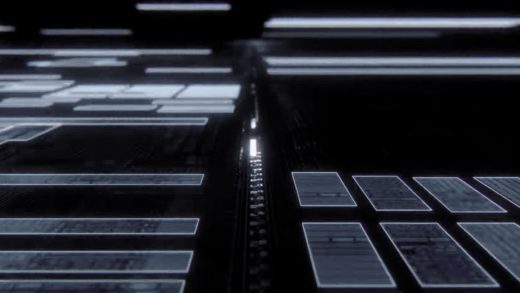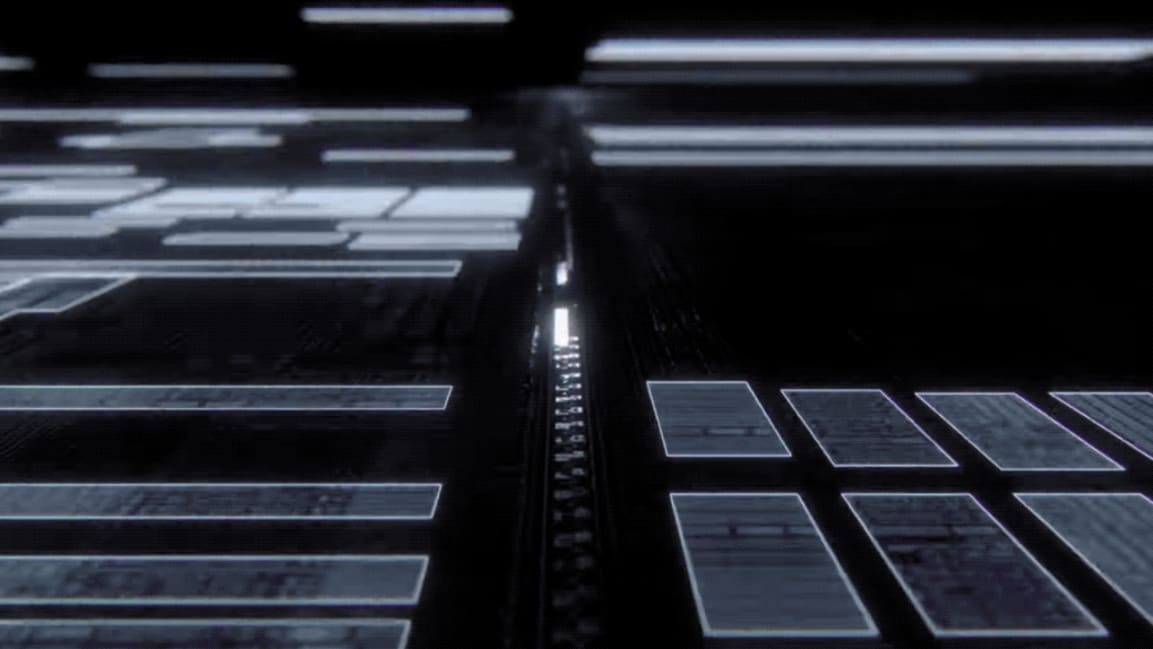Apple’s 2005 and 2020 WWDC keynotes: Eerily similar—and worlds apart
On Monday, I attended two Apple WWDC keynotes—from the comfort of my home office, of course, rather than in person.
The first one was the kickoff for this year’s all-virtual WWDC. A dense, fast-paced two-hour event starring Apple CEO Tim Cook, software chief Craig Federighi, and others, it led with a fusillade of forthcoming updates to iOS, iPadOS, WatchOS, tvOS and MacOS, all of which led up to the much-anticipated news that future Macs will ditch Intel processors for chips Apple designs itself.
And then, my appetite whetted for presentations about Mac platform transitions, I watched the 2005 WWDC keynote. That’s the one held on June 6 of that year at San Francisco’s Moscone Center—the one in which Steve Jobs announced that Macs would be moving to chips made by Intel, abandoning the PowerPC ones they’d been using.
More than most old tech events—even ones presided over by Steve Jobs—that 2005 keynote has remained lodged in the back of my brain. Apple going Intel was a big, unexpected deal, and Jobs was his best as he outlined the decision and its upshot. It’s so vivid in my memory that I thought I attended it in person—but looking back at my blog and archived email of the time, I see that I honored a prior engagement that morning and then watched a web replay of the keynote later in the day. (Foolish me.)
In some ways, the 2005 and 2020 presentations are uncannily similar. Rather than trying to get consumers excited about technical migrations, the primary purpose of each is to explain to developers why such an overwhelming undertaking is worth the effort. In both cases, the answer has to do with the new chips delivering better performance and more power efficiency than the ones they are replacing, allowing Apple to make better Macs. Both say that the process of switching chip architectures will take two years to complete.
In both 2005 and 2020, Apple assures developers that rejiggering their apps for the new chips will be surprisingly easy, at least in many cases. For apps that haven’t yet been updated, it unveils a technology—2005’s Rosetta and 2020’s Rosetta 2—that can convert old apps on the fly as a stopgap. And if you’d seen Jobs reveal partway through his 2005 keynote that he’d been secretly using an Intel Mac all morning, it shouldn’t come as a surprise that Federighi makes the same revelation in 2020—except that he’s been running a non-Intel Mac.
In neither year does Apple pour itself into convincing typical Mac users to be thrilled about the transition. That’s a job for later in the process, once Macs based on the new processors are available. But both presentations emphasize that Microsoft Office and Adobe Photoshop will run on the new machines, a reminder of how durably critical to everyday work these apps have been.
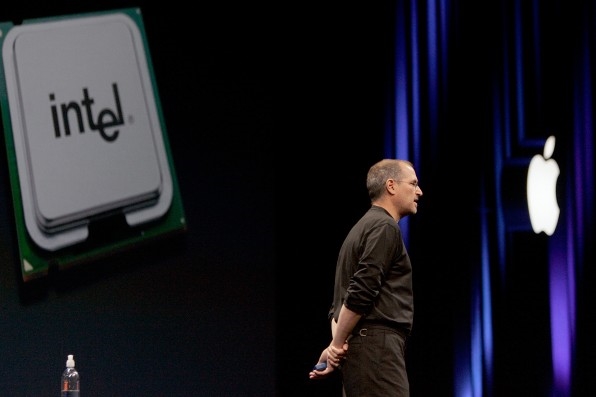
Unexpected vs. inevitable
For all the ways in which this year’s show felt like a remake of the one from 15 years ago, their vibes are strikingly different. For one thing, in 2005 the idea that Apple would be able to pull off moving the Mac from one processor architecture to another struck some people as implausible. Daring Fireball’s John Gruber, as savvy an Apple-watcher as they come, was deeply skeptical for multiple reasons, even in the wake of Wall Street Journal and CNET reports that the switch was imminent. Gruber thought it unlikely that an Intel chip could run existing apps in emulator mode at an adequate speed, and believed that Apple wouldn’t want to Osborne its PowerPC-based Mac line by acknowledging the existence of not-yet-available Intel Macs. Both reasonable concerns; neither turned out to be deal breakers.
By contrast, pundits began speculating about Macs adopting Apple-designed chips almost the moment the company began putting its own processors in iPhones and iPads back in 2010. “So short story, [Intel] is history on Apple laptops, or will be in 2-3 years,” declared OSXDaily—nine years ago. Giant technical shifts don’t feel quite as momentous if everyone’s been expecting them for ages.
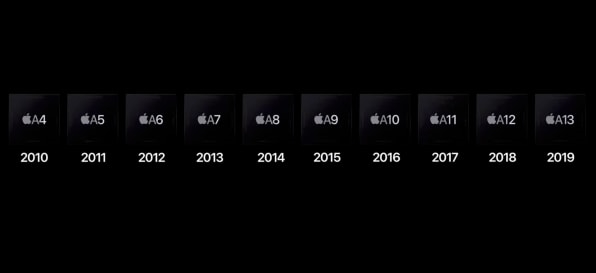
Then there’s the fact that the 2005 event is a Steve Jobs keynote in its most classic form. He’s the only Apple executive onstage—along with guests from Adobe, Intel, Microsoft, and Wolfram Research—and does all the explaining and demoing himself. And he’s doing it in front of an audience of developers who hang on every word. Even if Apple employees salted in the audience contribute some of the applause, the connection between Jobs and the people he’s trying to persuade is tangible. (In those days, Apple didn’t live-stream its keynotes, so the people in the room were the lucky few who heard the news first from the CEO himself.)
My colleague Mark Sullivan has made the case for virtual, prerecorded keynotes being an improvement on live, in-person ones. But a polished, prepackaged video can never compete with the drama of something going on in real time before several thousand people who really care. Maybe being in the fourth month of lockdown has me craving that experience—and hoping it’s not a lost art form.
Jobs gets as much out of his (many) pregnant pauses as anything he says.
With double the time, Jobs puts on a performance that emphasizes emotion over efficiency. “Why are we going to do this?” he asks at the start, channeling the weary resignation of a developer who’s about to be asked to do some heavy lifting in the interest of the Mac’s future. From then on, he’s by turns confident, cajoling, sheepish, and funny, and he gets as much out of his (many) pregnant pauses as anything he says. Elements as mundane as him stopping to chug bottled water elicit laughter.
In stepping through Apple’s rationale for adopting Intel, Jobs both acknowledges personal and corporate vulnerability and implicitly criticizes IBM, which had been supplying Apple with PowerPC chips. He says that Apple has painted itself into a corner by using PowerPC technology, ruefully explaining that he had promised a 3-GHz Power Mac two years earlier, one that Apple had been unable to build. Nor had it been able to design a PowerBook laptop to rival its most powerful desktops. “As we look ahead, we can envision some amazing products we want to build for you,” he says. “And we don’t know how to build them with the future PowerPC roadmap.”
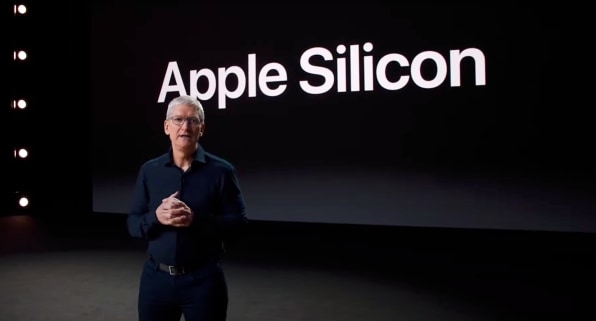
Flash forward to 2020. Cook’s explanation for the platform shift to Apple-designed silicon, though also about technical excellence to come, is more buttoned-down: “When we make bold changes, it’s for one simple yet powerful reason: So we can make much better products.” He doesn’t admit any Apple weaknesses or set up Intel as a fall guy; actually, Intel barely comes up.
The 2020 presentation crisply starts the process of telling developers what they need to know and bristles with self-assurance. But what gets ground out is the humanity of the 2005 video. The Apple executives are talking to the camera, not a crowd, and we can’t gauge the reaction. After watching Jobs’s performance, the 2020 version feels like it’s running at 2X speed . . . because in a way it is.
The beginning of an era, and its end
For computer nerds, both Apple’s move to Intel in 2005 and the end of the relationship this year are full of epoch-shifting resonance. Prior to the Mac adopting its chips, Intel’s association with Microsoft and Windows was so symbiotic that people used “Wintel” as shorthand for the shared platform. That was a large part of what made it hard for people to get their heads around the idea of an Intel-powered Macintosh.
2005 was a long time ago—not just for Apple, but the tech industry, period.
Watching any Steve Jobs keynote is a wistful portal into the past, and always will be. Paul Otellini, the Intel CEO who appears at the end of Jobs’s presentation—good-naturedly introducing a 1996 ad in which Apple had mocked both Intel’s chips and its “bunny suit” ad campaign—is gone, too. 2005 was a long time ago, not just for Apple, but the tech industry, period.
Judged as an accomplishment for Apple, the news at the 2020 keynote easily trumps that of the 2005 edition. Steve Jobs was fond of bragging that Apple was the only technology company vertically integrated enough to make “the whole widget.” That’s about to be true of the Mac from the processor up, completing a vision decades in the making.
Still, the 2005 keynote remains special. It’s impossible to rekindle that moment in time, but I’m glad we can revisit it—even if the exciting future it spells out is now officially history.
(40)

